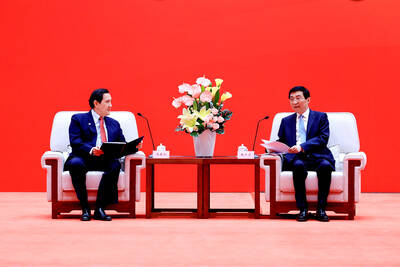Nokia Oyj, the world's largest maker of mobile telephones, has developed a handset that also works like a walkie-talkie in a bid to lift sales and defend its market share against rivals such as Motorola Inc.
The 5140 phone lets users talk by pushing a button rather than dialing a number. Nokia, based in Espoo, Finland, plans to sell the phone to AT&T Wireless Services Inc and Cingular Wireless LLC, Markku Savusalo, who heads Nokia's push-to-talk division, told reporters at a company-sponsored conference in New York.
Sales of the handset will start next year and may help Nokia challenge it biggest competitor, Schaumburg, Illinois-based Motorola, which dominates the market for walkie-talkie phones.
Cingular and AT&T Wireless are seeking to take business from Nextel Communications Inc and Verizon Wireless, the only nationwide US providers of push-to-talk service.
Yankee Group analyst Adam Guy said Nokia's new phone may help carriers such as Cingular and AT&T Wireless attract new customers to walkie-talkie calling, though it's unlikely to help them win over existing Nextel customers.
"No matter what they do they're not going to be able to replicate the immediacy of Nextel," Guy said.
Nokia is aiming its new phone at consumers, rather than businesses, the main market for Nextel's service, Savusalo said.
"That market really hasn't been addressed at all," he said. "It's a brand new opportunity."
Nokia, whose sales have risen no more than 2 percent in any of the past nine quarters, plans to sell a range of push-to-talk capable phones around the world next year, according to Savusalo.
The first, which includes a built-in camera, will start selling in the second quarter of next year.
Nokia's second-quarter global market share was 36 percent, compared with 15 percent for Motorola.
Nokia's American depositary receipts rose US$0.61, or 3.6 percent, to US$17.69 at 2:45pm in New York Stock Exchange composite trading.
Motorola shares gained US$0.27 to US$13.59.

LONG FLIGHT: The jets would be flown by US pilots, with Taiwanese copilots in the two-seat F-16D variant to help familiarize them with the aircraft, the source said The US is expected to fly 10 Lockheed Martin F-16C/D Block 70/72 jets to Taiwan over the coming months to fulfill a long-awaited order of 66 aircraft, a defense official said yesterday. Word that the first batch of the jets would be delivered soon was welcome news to Taiwan, which has become concerned about delays in the delivery of US arms amid rising military tensions with China. Speaking on condition of anonymity, the official said the initial tranche of the nation’s F-16s are rolling off assembly lines in the US and would be flown under their own power to Taiwan by way

CHIP WAR: The new restrictions are expected to cut off China’s access to Taiwan’s technologies, materials and equipment essential to building AI semiconductors Taiwan has blacklisted Huawei Technologies Co (華為) and Semiconductor Manufacturing International Corp (SMIC, 中芯), dealing another major blow to the two companies spearheading China’s efforts to develop cutting-edge artificial intelligence (AI) chip technologies. The Ministry of Economic Affairs’ International Trade Administration has included Huawei, SMIC and several of their subsidiaries in an update of its so-called strategic high-tech commodities entity list, the latest version on its Web site showed on Saturday. It did not publicly announce the change. Other entities on the list include organizations such as the Taliban and al-Qaeda, as well as companies in China, Iran and elsewhere. Local companies need

CRITICISM: It is generally accepted that the Straits Forum is a CCP ‘united front’ platform, and anyone attending should maintain Taiwan’s dignity, the council said The Mainland Affairs Council (MAC) yesterday said it deeply regrets that former president Ma Ying-jeou (馬英九) echoed the Chinese Communist Party’s (CCP) “one China” principle and “united front” tactics by telling the Straits Forum that Taiwanese yearn for both sides of the Taiwan Strait to move toward “peace” and “integration.” The 17th annual Straits Forum yesterday opened in Xiamen, China, and while the Chinese Nationalist Party’s (KMT) local government heads were absent for the first time in 17 years, Ma attended the forum as “former KMT chairperson” and met with Chinese People’s Political Consultative Conference Chairman Wang Huning (王滬寧). Wang

OBJECTS AT SEA: Satellites with synthetic-aperture radar could aid in the detection of small Chinese boats attempting to illegally enter Taiwan, the space agency head said Taiwan aims to send the nation’s first low Earth orbit (LEO) satellite into space in 2027, while the first Formosat-8 and Formosat-9 spacecraft are to be launched in October and 2028 respectively, the National Science and Technology Council said yesterday. The council laid out its space development plan in a report reviewed by members of the legislature’s Education and Culture Committee. Six LEO satellites would be produced in the initial phase, with the first one, the B5G-1A, scheduled to be launched in 2027, the council said in the report. Regarding the second satellite, the B5G-1B, the government plans to work with private contractors